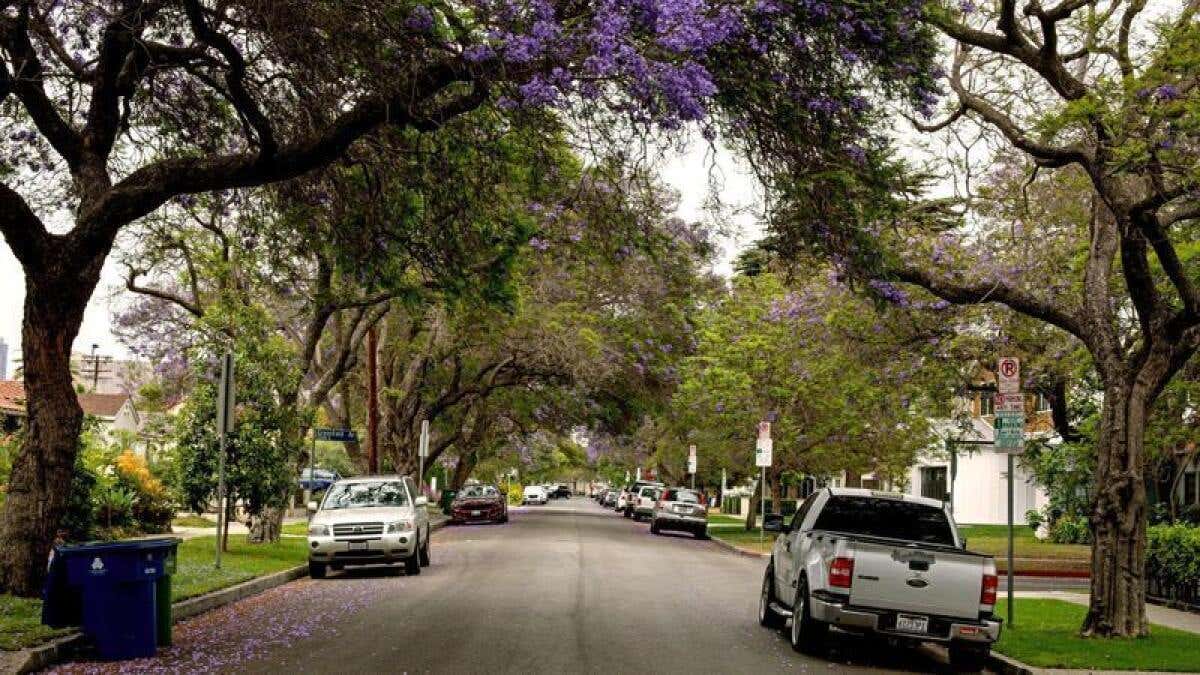Los Angeles’ trees can absorb up to 60% of daytime CO2 emissions
New study finds that L.A.’s trees absorb up to 60% of daytime CO2 emissions in summer, offering new insights into urban climate strategies.

Researchers discovered that Los Angeles’ trees absorb significantly more carbon dioxide than expected. (CREDIT: Environmental Science & Technology)
Cities around the world are ramping up efforts to cut carbon emissions, aligning with global climate commitments like the Paris Agreement. Monitoring these emissions is essential for tracking progress, and new technologies are providing a clearer picture of how urban landscapes contribute to or mitigate pollution.
A recent study published in the journal Environmental Science & Technology has revealed a surprising player in the city’s battle against CO2—its trees.
Measuring Carbon in Los Angeles
To better understand how emissions move through the city, researchers from USC Dornsife College launched an advanced carbon monitoring system. They installed 12 high-resolution BEACO₂N sensors across a 15-by-6-mile section of central Los Angeles.
These sensors, part of a broader University of California, Berkeley initiative, measured real-time CO2 levels, providing an unprecedented look at how emissions travel with wind and urban density.
“You can think of emissions like passengers on a train,” said Will Berelson, the study’s lead researcher and a professor at USC. “As the wind moves pollution through the city, some gets picked up and some gets dropped off. These sensors let us see that process in real time.”
Unlike traditional methods that estimate emissions based on economic data, traffic patterns, or energy consumption, this study measured actual atmospheric CO2. Researchers used carbon monoxide (CO) as a proxy for fossil fuel-generated CO2, differentiating it from emissions produced by biological sources.
The results were surprising: during spring and summer, urban greenery absorbed up to 60% of daytime fossil fuel emissions, a much higher rate than previously assumed. On an annual scale, trees offset about 30% of local fossil fuel CO2 emissions. This places Los Angeles among cities with the highest recorded rates of urban carbon uptake.
Related Stories
The Role of Urban Greenery
One of the most unexpected findings was that trees absorbed the most carbon dioxide during summer, despite Los Angeles experiencing minimal rainfall. Researchers suspect this is due to irrigation, access to groundwater from leaky pipes, and the presence of resilient tree species.
Satellite imagery confirmed that the city remains lush even in dry months, which may contribute to its ability to absorb carbon at such high rates.
However, trees alone cannot compensate for the sheer volume of emissions. Predictably, CO2 levels spiked during rush hour, highlighting the major role that vehicles and industrial activities play in urban pollution.
While trees help mitigate some of this impact, the findings reinforce the need for broader environmental policies, including cleaner energy, improved public transit, and stricter emissions regulations.
“Nature is helping us,” Berelson said, “but we can’t rely on it to do all the work.”
Expanding Carbon Monitoring
Encouraged by the study’s success, researchers have expanded the BEACO₂N network, adding eight more sensors eastward into downtown Los Angeles and westward into Santa Monica.
This expansion will help define CO2 emission baselines in more areas, pinpoint where urban vegetation is making the most significant impact, and identify neighborhoods where additional greenery is needed.
By combining ground-level measurements with atmospheric models, this research goes beyond traditional emission estimates. Inverse modeling techniques, often used in global climate assessments, allow scientists to trace emissions back to their sources with greater precision.
Previous studies using these methods found that during COVID-19 lockdowns, emissions in the San Francisco Bay Area fell by 8% from stationary sources and nearly 50% from traffic. Long-term data from the BEACO₂N project suggests that Los Angeles is experiencing a steady decline in CO2 emissions, averaging about 1.8% per year.
Toward a Greener Future
Los Angeles has committed to becoming carbon-neutral by 2050. The findings from this study could shape urban planning strategies, particularly for tree-planting initiatives.
The USC Urban Trees Initiative, a collaboration between the university, the city, and local organizations, aims to expand green spaces in communities most affected by pollution. Data from the BEACO₂N sensors can guide these efforts, ensuring that new plantings occur in areas where they will have the greatest environmental impact.
Despite the promising role of trees, the study underscores that cutting fossil fuel use remains the most critical step in fighting climate change.
With advanced carbon tracking systems like BEACO₂N, cities worldwide can better assess their progress, fine-tune mitigation strategies, and move toward a cleaner, more sustainable future.
Note: Materials provided above by The Brighter Side of News. Content may be edited for style and length.
Like these kind of feel good stories? Get The Brighter Side of News' newsletter.
Joshua Shavit
Science & Technology Writer | AI and Robotics Reporter
Joshua Shavit is a Los Angeles-based science and technology writer with a passion for exploring the breakthroughs shaping the future. As a contributor to The Brighter Side of News, he focuses on positive and transformative advancements in AI, technology, physics, engineering, robotics and space science. Joshua is currently working towards a Bachelor of Science in Business Administration at the University of California, Berkeley. He combines his academic background with a talent for storytelling, making complex scientific discoveries engaging and accessible. His work highlights the innovators behind the ideas, bringing readers closer to the people driving progress.



